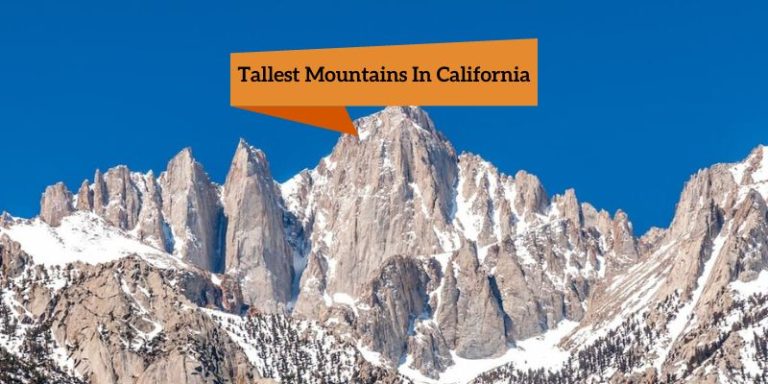Tallest Mountains In North America – 10 Highest Peaks In 2024
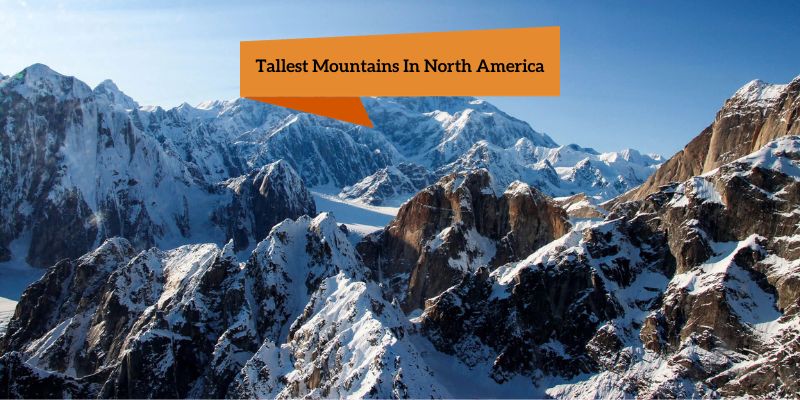
Let’s explore the tallest mountains in North America . From the majestic Denali in Alaska to the fiery history of Volcan Popocatepetl in Mexico. These natural wonders captivate with their sheer size and geological stories.
Each offering a unique adventure and a glimpse into the untamed beauty of North America. Discover the grandeur of these north america mountains as we look their heights, history, and the spirit of exploration. Which draws adventurers to the summits of Top 10 Tallest north american mountain ranges.
Top 10 Tallest Mountains In North America Highest Major Summits in 2024
The tallest mountains in North America haven’t changed in height or order as of 2024. But natural things like erosion and moving ice can still slightly change their heights. Scientists might also be studying these mountains, but we haven’t heard big news about it yet.
| Rank | Name | Height (ft) | Range | Location |
| 1 | Denali | 20,310 ft | Alaska | Alaska |
| 2 | Mount Logan | 19,551 ft | Saint Elias Mountains | Yukon |
| 3 | Pico De Orizaba | 18,491 ft | Cordillera Neovolcanica | Puebla Veracruz |
| 4 | Mount Saint Elias | 18,009 ft | Saint Elias Mountains | Alaska Yukon |
| 5 | Popocatepetl | 17,749 ft | Cordillera Neovolcanica | México Morelos Puebla |
| 6 | Mount Foraker | 17,400 ft | Alaska | Alaska |
| 7 | Mount Lucania | 17,257 ft | Saint Elias Mountains | Yukon |
| 8 | Iztaccihuatl | 17,159 ft | Cordillera Neovolcanica | Mexico Puebla |
| 9 | King Peak | 16,972 ft | Saint Elias Mountains | Yukon |
| 10 | Mount Bona | 16,550 ft | Saint Elias Mountains | Alaska |
1. Denali
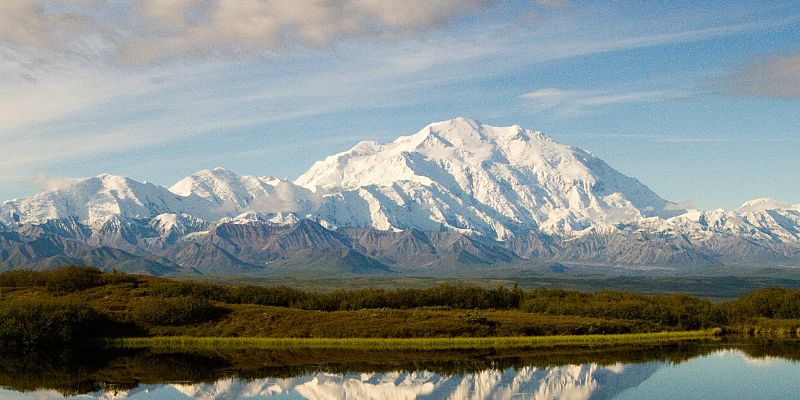
- Name: Denali
- Height: 20,310 feet
- Rang: Alaska
- Location: Alaska
- First Ascent: June 7, 1913
- First Climber: Walter Harper, Harry Karstens, Hudson Stuck & Robert Tatum
The highest peak in north america and the highest point in the USA Denali, also known as Mount McKinley. It rises majestically to a towering height of 20,310 feet in the heart of Alaska. It command a prominent position in the spectacular Alaska Range and the Denali National Park and Preserve. Its snow-clad summit and rugged terrain showcase the breathtaking beauty and force of nature.
Denali reigns as North America’s loftiest mountain and ranks as the third tallest globally. Denali isn’t just a mountain; it’s an epic tale of adventure and exploration. It beckon those with a spirit for conquering its imposing heights. It symbolizes the untamed beauty of Alaska and the monumental grandeur of North America’s landscapes.
Read Also: Tallest montains in the world
2. Mount Logan
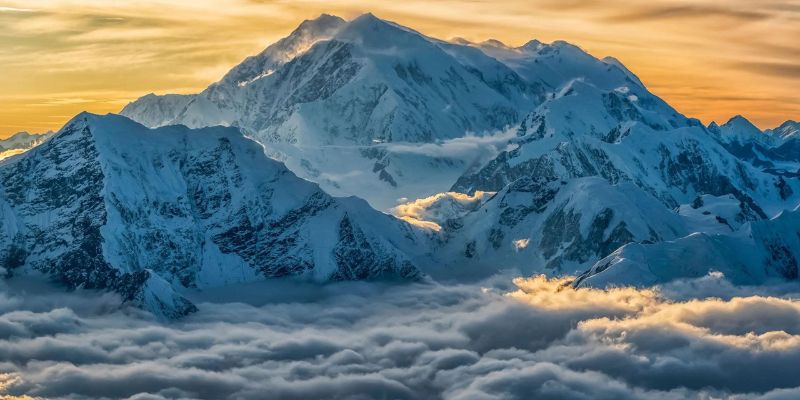
- Name: Mount Logan
- Height: 19,551 feet
- Rang: Saint Elias Mountain Range
- Location: Yukon
- First Ascent: June 23, 1925
- First Climber: William Wasbrough Foster and team
Nestled in Canada’s Yukon Territory within the Saint Elias Mountain Range. Mount Logan stands as North America’s second-tallest peak. It reaches an elevation of 19,551 feet, a testament to the continent’s natural diversity. The mounain ranscends the static grandeur of typical mountains. It constantly evolving as tectonic plates shift and grind beneath it, subtly but persistently pushing its summit higher.
Located within Kluane National Park and Reserve. The Mount Logan not only enhances the ecological richness of the region but also offers a habitat to diverse species. It embodies an ever-evolving chapter in our planet’s story. It invites exploration and reverence for the unstoppable forces of nature that shape our world.
3. Pico De Orizaba
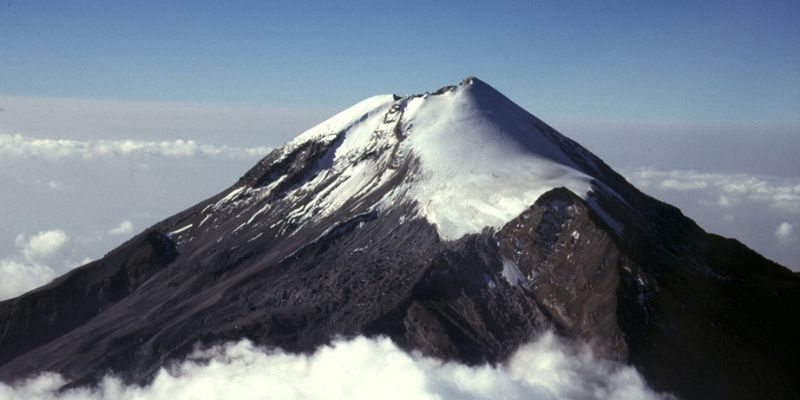
- Name: Pico de Orizaba
- Height: 18,491 feet
- Rang: Cordillera Neovolcanica range
- Location: Puebla Veracruz
- First Ascent: 1848
- First Climber: William F. Raynolds & F. Maynard
Situated within Mexico’s Cordillera Neovolcanica mountain range. Pico de Orizaba, also known as Citlaltepetl, stands as North America’s third-highest peak, reaching an impressive height of 18,491 feet. Its volcanic origin distinguishes it as a unique natural wonder on the continent. Although currently dormant, Pico de Orizaba serves as a tangible reminder of the Earth’s dynamic forces. With its last eruption in 1846 leaving an indelible mark on the landscape and local communities.
Today, the mountain’s tranquil, snow-capped summit offers an inviting challenge to adventurers and nature enthusiasts. It provides a firsthand experience of the contrast between its serene present and fiery past, unfolding a captivating geological narrative throughout the ascent.
4. Mount Saint Elias
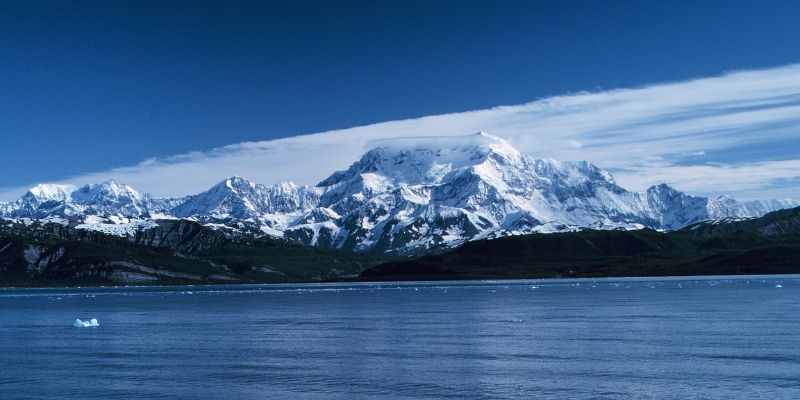
- Name: Mount Saint Elias
- Height: 18,009 feet
- Rang: Saint Elias Mountains range
- Location: Alaska Yukon
- First Ascent: 1897
- First Climer: Prince Luigi Amedeo & Duke of the Abruzzi
The 4th tallest peak in north america Mount Saint Elias, boasts an impressive height of 18,009 feet. What sets it apart is its exceptional location, straddling the border between the United States and Canada. This geographical titan finds its residence split between two iconic National Parks: Canada’s Kluane National Park and Reserve on its northern slopes, and the United States’ Wrangell-Saint Elias National Park and Preserve on its southern side.
This unique positioning not only makes Mount Saint Elias a magnet for adventurers seeking to conquer its heights but also symbolizes the shared natural heritage and unity between the two nations amid the grandeur of North America’s landscapes.
5. Volcan Popocatepetl
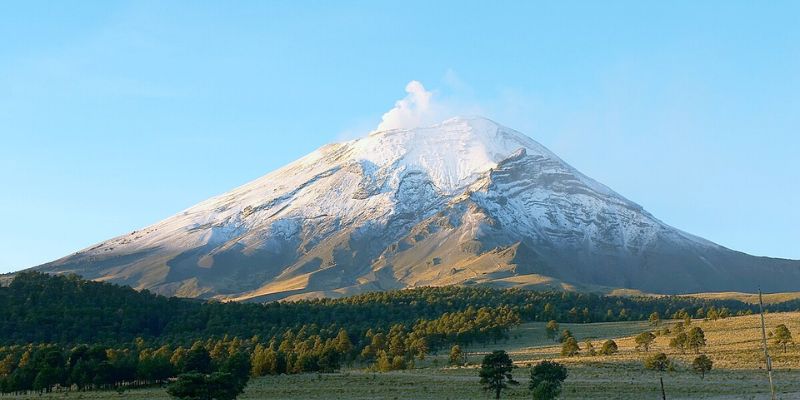
- Name: Volcan Popocatepetl
- Height: 17,749 feet
- Rang: Cordillera Neovolcanica range
- Location: México Morelos Puebla
- First Ascent: 1519
- First Cliber: Diego de Ordaz
The Volcan Popocatepetl, one of North America’s top five tallest peaks at 17,749 feet. It resides within the Cordillera Neovolcanica range. It graces the borders of Puebla, Morelos, and the State of Mexico with its awe-inspiring presence. Beyond its towering stature, this active volcano serves as a living testament to Earth’s raw and ever-changing power. Its eruption in 1947 stands as a vivid reminder of its simmering, molten core beneath the craggy exterior.
Despite the inherent danger, Volcan Popocatepetl captivates as a pinnacle of natural wonder, showcasing the Earth’s dynamic geological forces. For adventurous spirits, it remains an unforgettable destination, a testament to exploration’s audacious spirit and the enduring allure of North America’s tallest peaks.
6. Mount Foraker
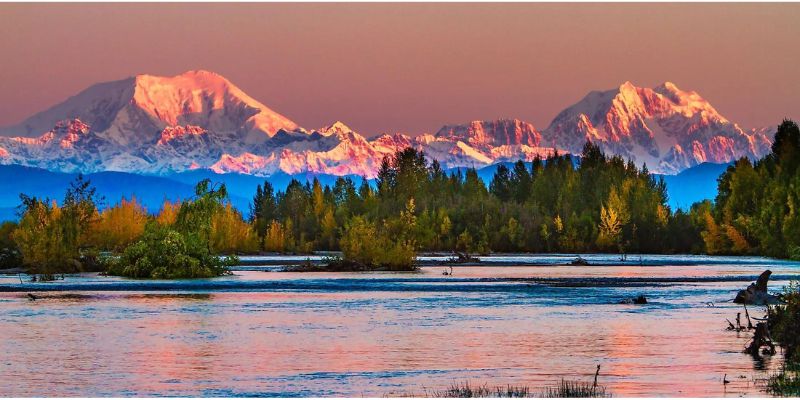
- Name: Mount Foraker
- Height: 17,400 feet
- Rang: Alaska Range
- Location:Alaska
- First Ascent: 1934
- First Climer: Charles Snead Houston
The Mount Foraker, the United States’ third-highest peak at 17,400 feet in the Alaska Range, proudly graces the Alaskan skyline alongside Denali. Nestled within Denali National Park and Preserve, it sits about 14 miles southwest of Denali itself, perched on a fork of the Kahiltna Glacier. This unique location offers a captivating blend of geological forces and icy splendor.
Locally, the indigenous Dena’ina people refer to it as “Sultana” or “Menlale,” translating to “the woman” and “Denali’s wife,” a nod to its proximity to Denali. With a rich mountaineering history dating back to 1934, Mount Foraker presents a natural, culturally significant, and adventure-laden experience, challenging climbers, fascinating geologists, and symbolizing natural grandeur for all who behold it.
7. Mount Lucania
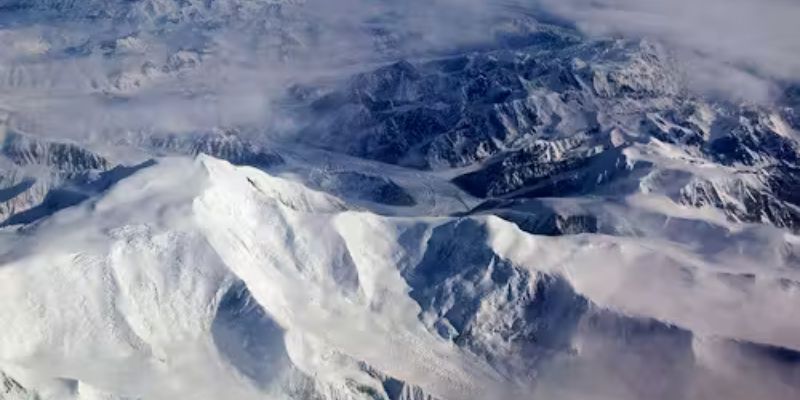
- Name: Mount Lucania
- Height: 17,257 feet
- Rang: Saint Elias Mountains
- Location: Yukon
- First Ascent: 1937
- First Climber: Bradford Washburn & Robert Bates
The Mount Lucania, the seventh-highest peak in North America at 17,257 feet, graces Canada’s Yukon territory with its majestic presence. Connected to Mount Steele by a sprawling ridge, these colossal formations inspire climbers and nature enthusiasts alike. As Canada’s third-highest and second-highest peak entirely within its borders, Mount Lucania’s prominence on the continent is undeniable.
It owes its name to the RMS Lucania, a ship that carried the Duke of Abruzzi, the first to summit Mount Saint Elias in 1897. The mountain’s human history dates back to 1937, marking its first successful ascent. Today, Mount Lucania continues to captivate, symbolizing North America’s rugged beauty and the enduring allure of the Canadian Yukon.
8. Iztaccíhuatl
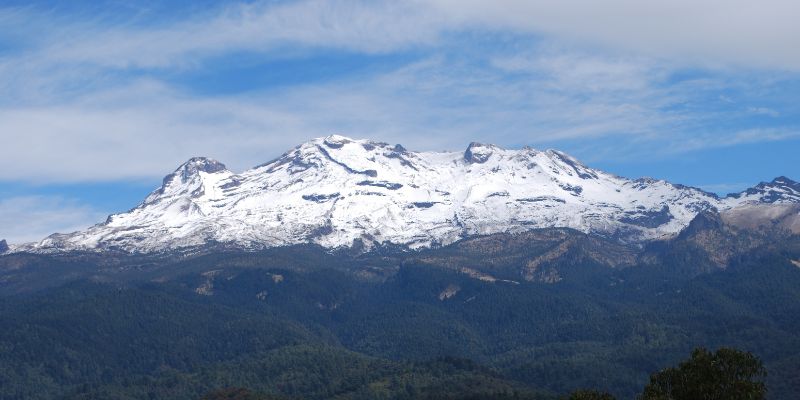
- Name: Iztaccíhuatl
- Height: 17,159 feet
- Rang: Cordillera Neovolcanica range
- Location: Mexico Puebla
- First Ascent: 1889
- First Climber: James de Salis
The Iztaccíhuatl, a dormant volcano in Mexico, rises impressively to 17,159 feet along the border of the State of Mexico and Puebla, nestled within Izta-Popo Zoquiapan National Park. Ranking as Mexico’s third-highest peak after Pico de Orizaba and Popocatépetl, it derives its name, meaning “White Woman,” from the Nahuatl language. This mountain is unique for its four snow-capped peaks, which, when viewed from the east or west, resemble a sleeping female figure.
Adorned with permanent snow and glaciers, Iztaccíhuatl is the twin of Popocatépetl to the south, connected by the high-altitude Paso de Cortés. It remains a significant landmark in Mexico’s rich topography and cultural heritage, with a history of human triumph dating back to 1889, and possibly even earlier among the Aztecs and other ancient cultures.
9. King Peak
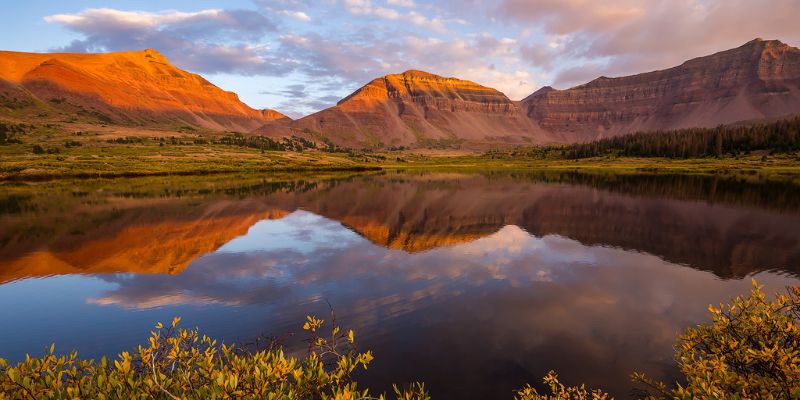
- Name: King Peak
- Height: 16,972 feet
- Rang: Saint Elias Mountains range
- Location: Yokun
- First Ascent: 1952
- First Climer: Keith Hart & Elton Thayer
Nestled within Canada’s expansive Yukon region, King Peak stands as a majestic sight to behold with 16,972 feet. It ranks as the ninth-highest mountain in North America and the fourth-highest in Canada, showcasing the country’s abundant natural beauty and diverse landscapes. Often referred to as Mount King, it sits just west of Canada’s highest peak, Mount Logan, often considered a satellite of the latter.
On June 6, 1952, a group of determined University of Alaska students achieved the first ascent of King Peak, marking a historic moment. Today, King Peak’s towering presence continues to inspire and attract adventurers, highlighting the raw beauty of North America’s alpine landscapes and the array of peaks that grace the continent.
10. Mount Bona
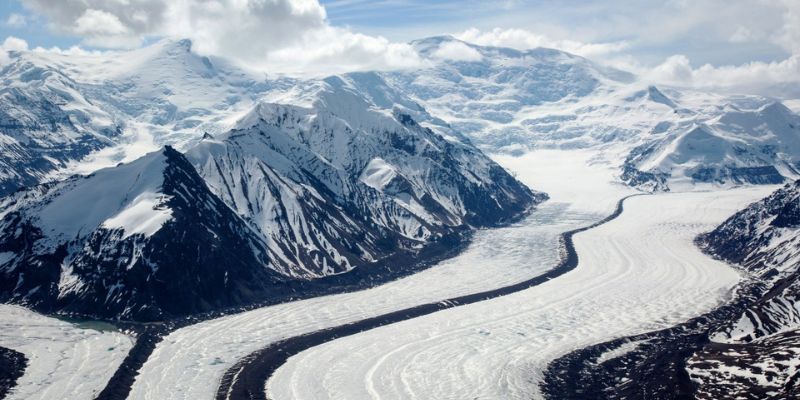
- Name: Mount Bona
- Height: 16,550 ft
- Rang: Saint Elias Mounatins range
- Location: Alaska
- First Ascent: 1930
- First Climer: Allen Carpé, Terris Moore, & Andrew Taylor
Located in the rugged terrain of eastern Alaska with a height of 16,550 ft, Mount Bona claims its position as the fifth-highest peak in the United States and the tenth-highest in North America. This stratovolcano is a part of the formidable Saint Elias Mountains and stands as the highest in the United States and the fourth-highest in North America.
Its appearance is dominated by ice fields and glaciers, creating a dramatic natural sculpture of ice and rock that imposes itself on the landscape. Mount Bona’s icy features play a crucial role as a source for the Klutlan Glacier, extending east into Canada’s Yukon Territory for over 40 miles, and contributing significantly to the north-flowing Russell Glacier system, shaping the region’s geography.
The first successful summit of Mount Bona was achieved in 1930 by a team led by Allen Carpé, Terris Moore, and Andrew Taylor, setting the stage for future adventurers and nature enthusiasts to be inspired by its icy allure and volcanic grandeur. So it was the 10th tallest under the list of top 10 tallest mountains in North America.




